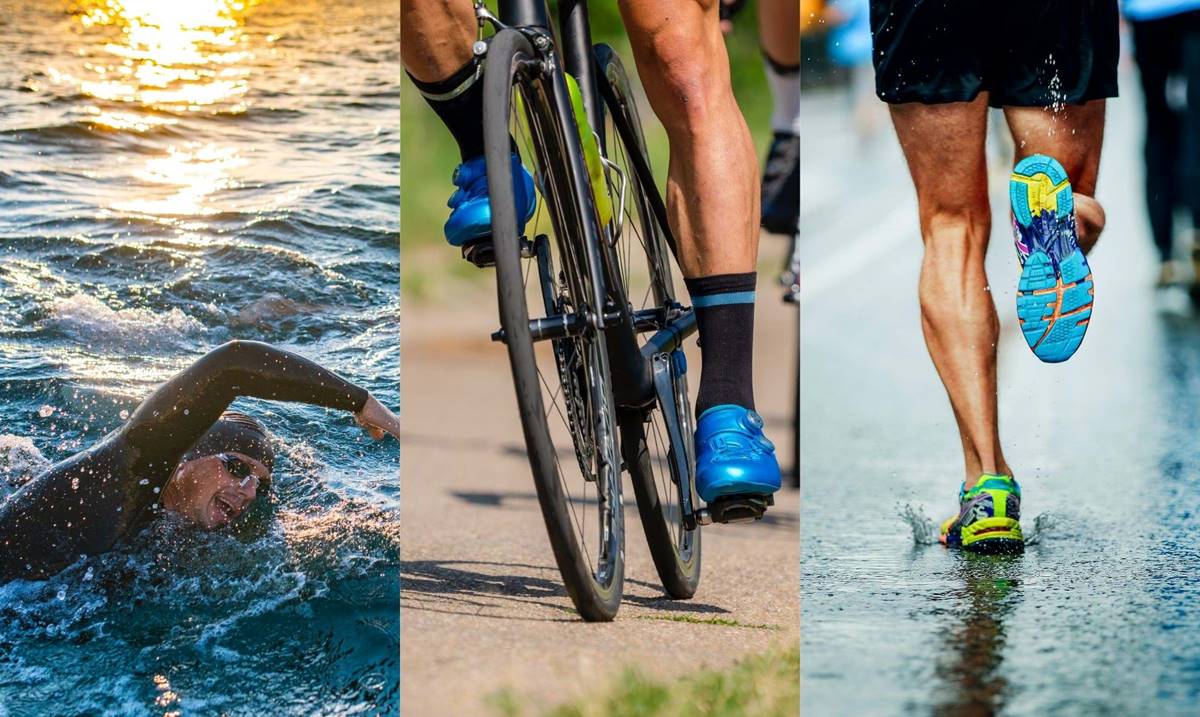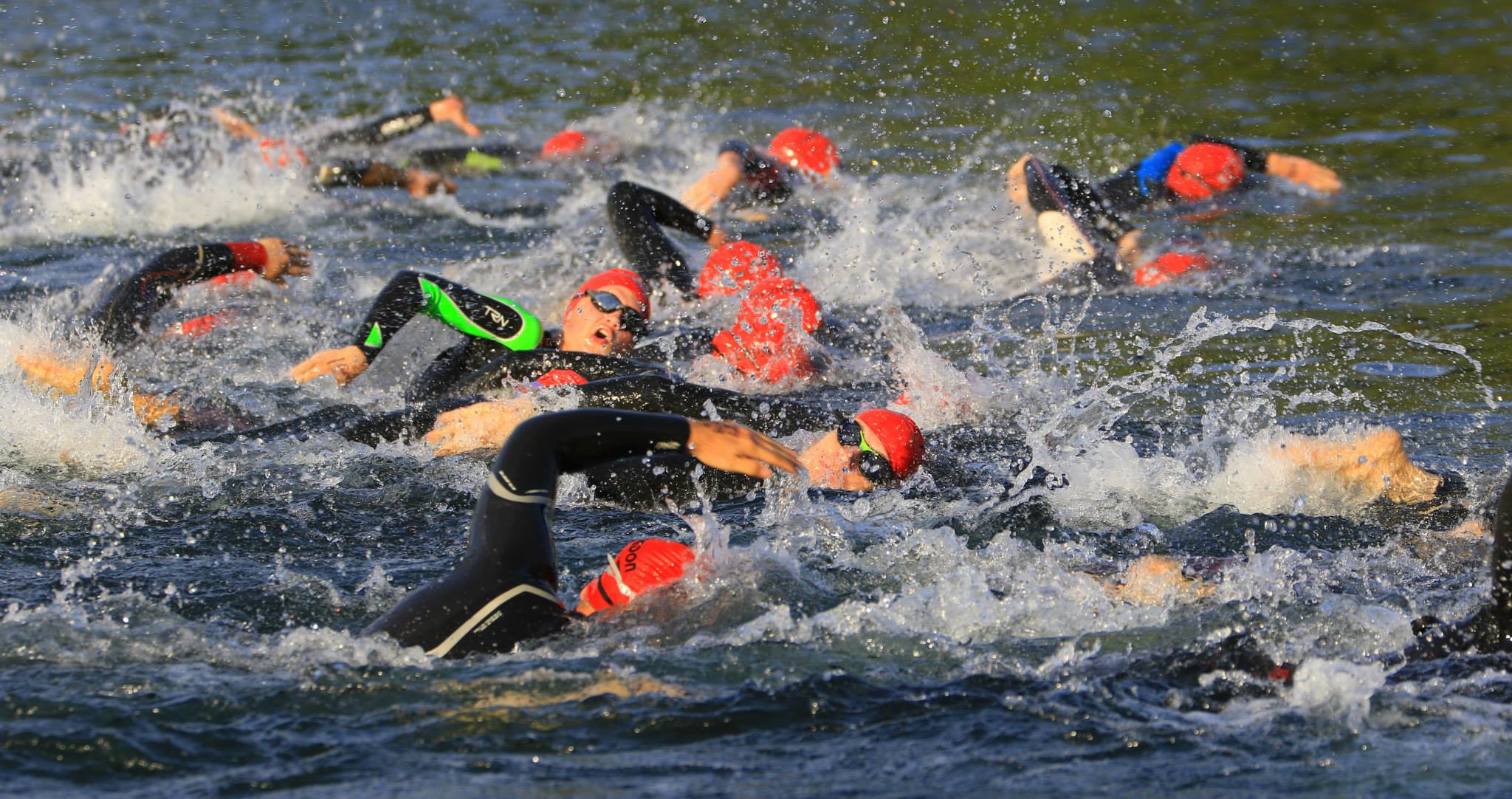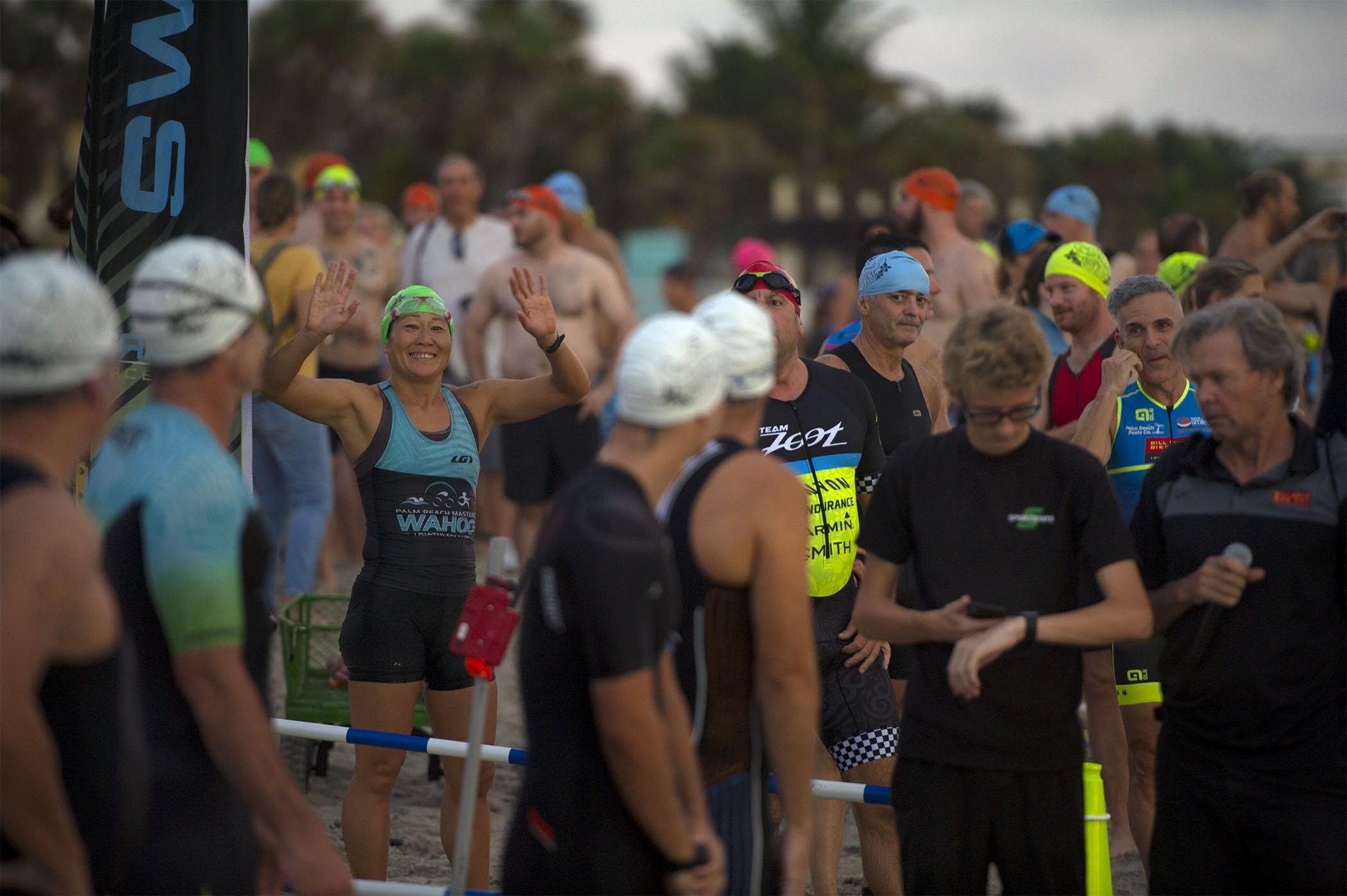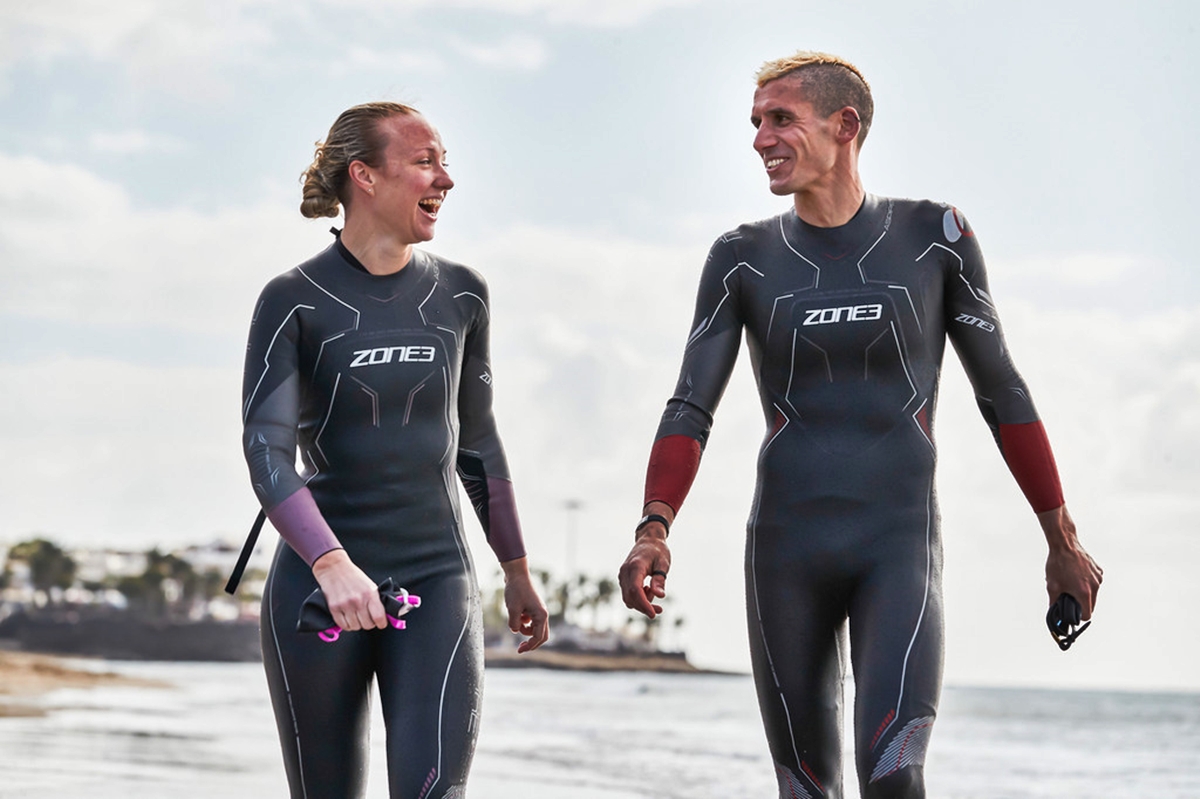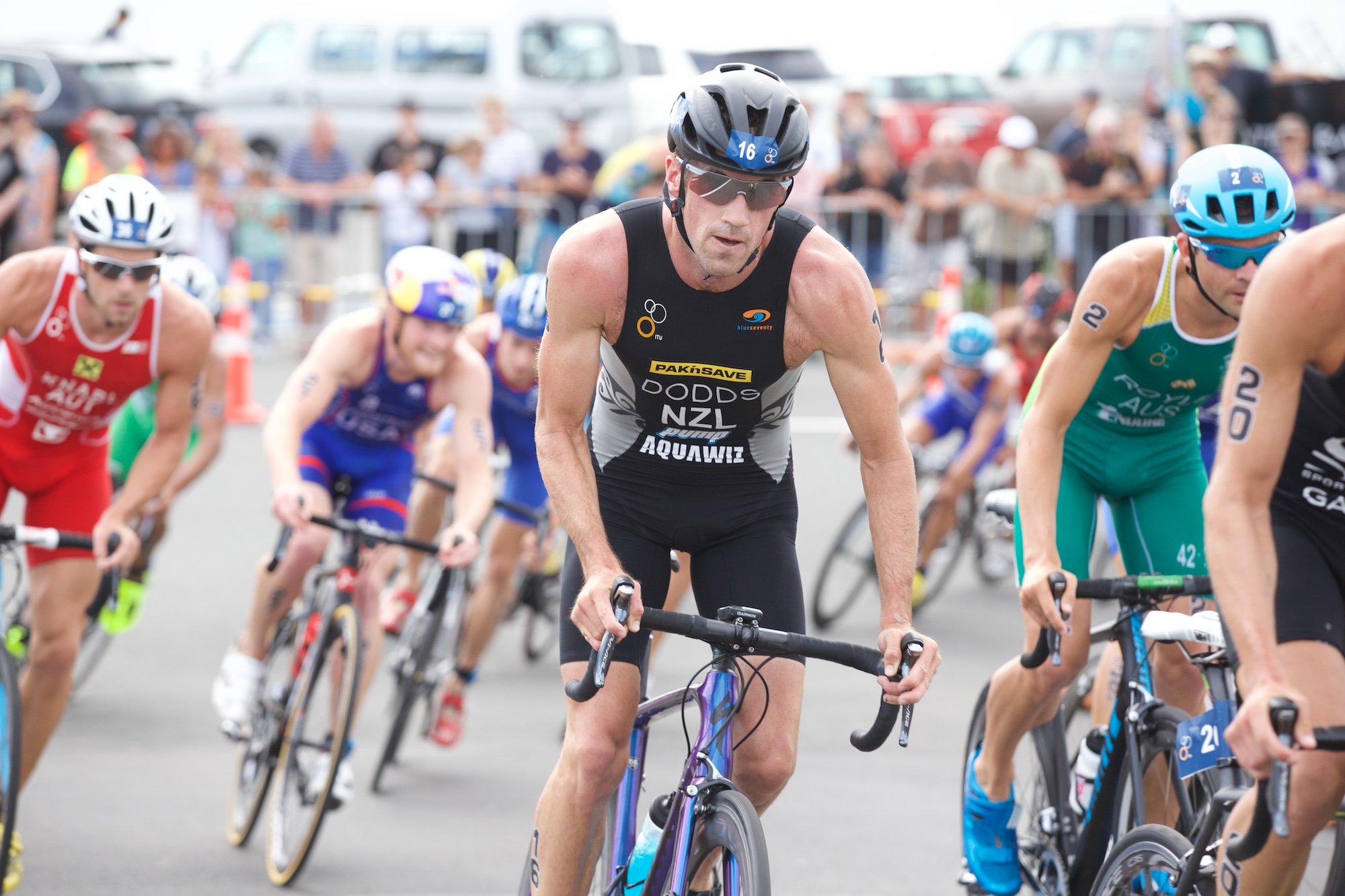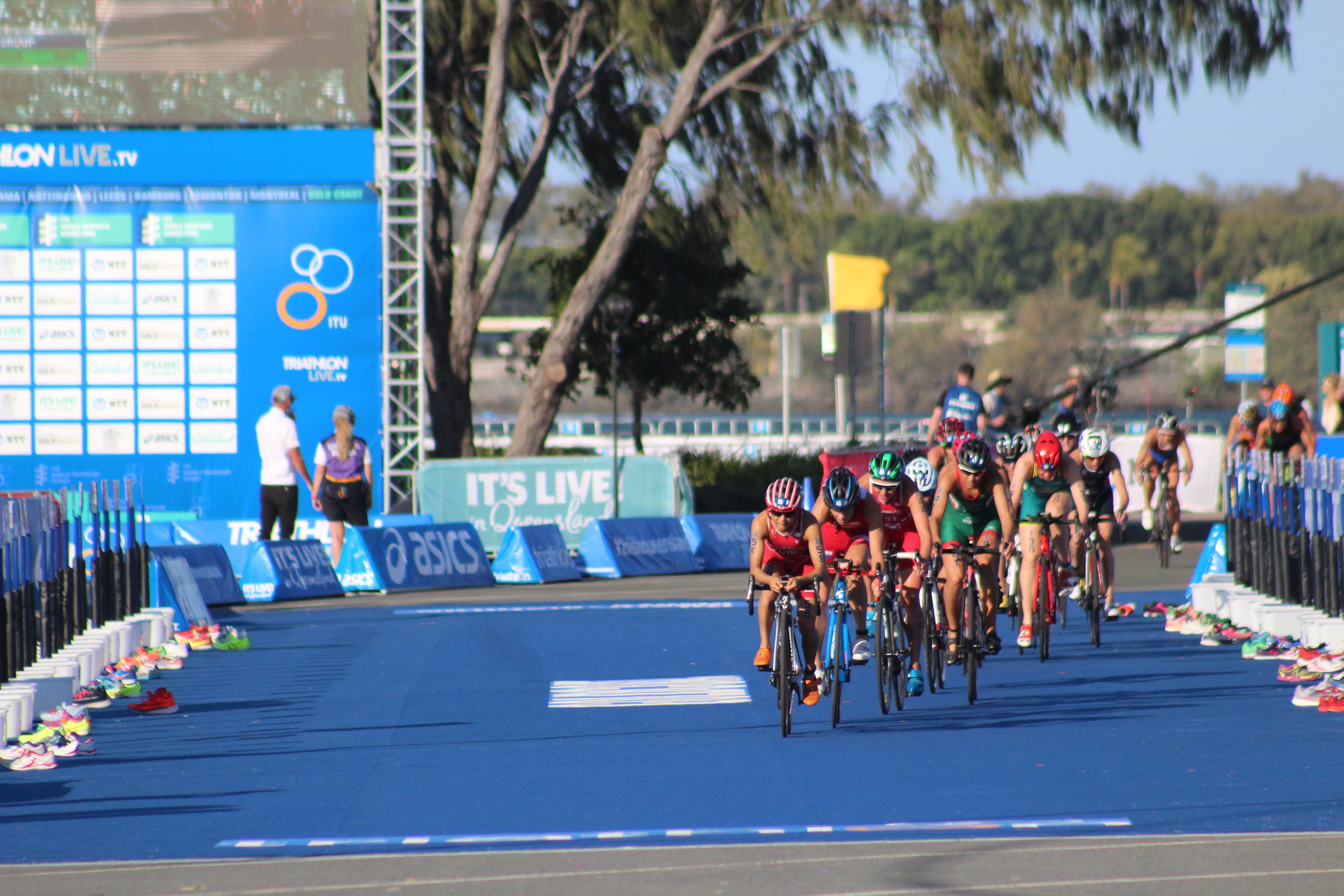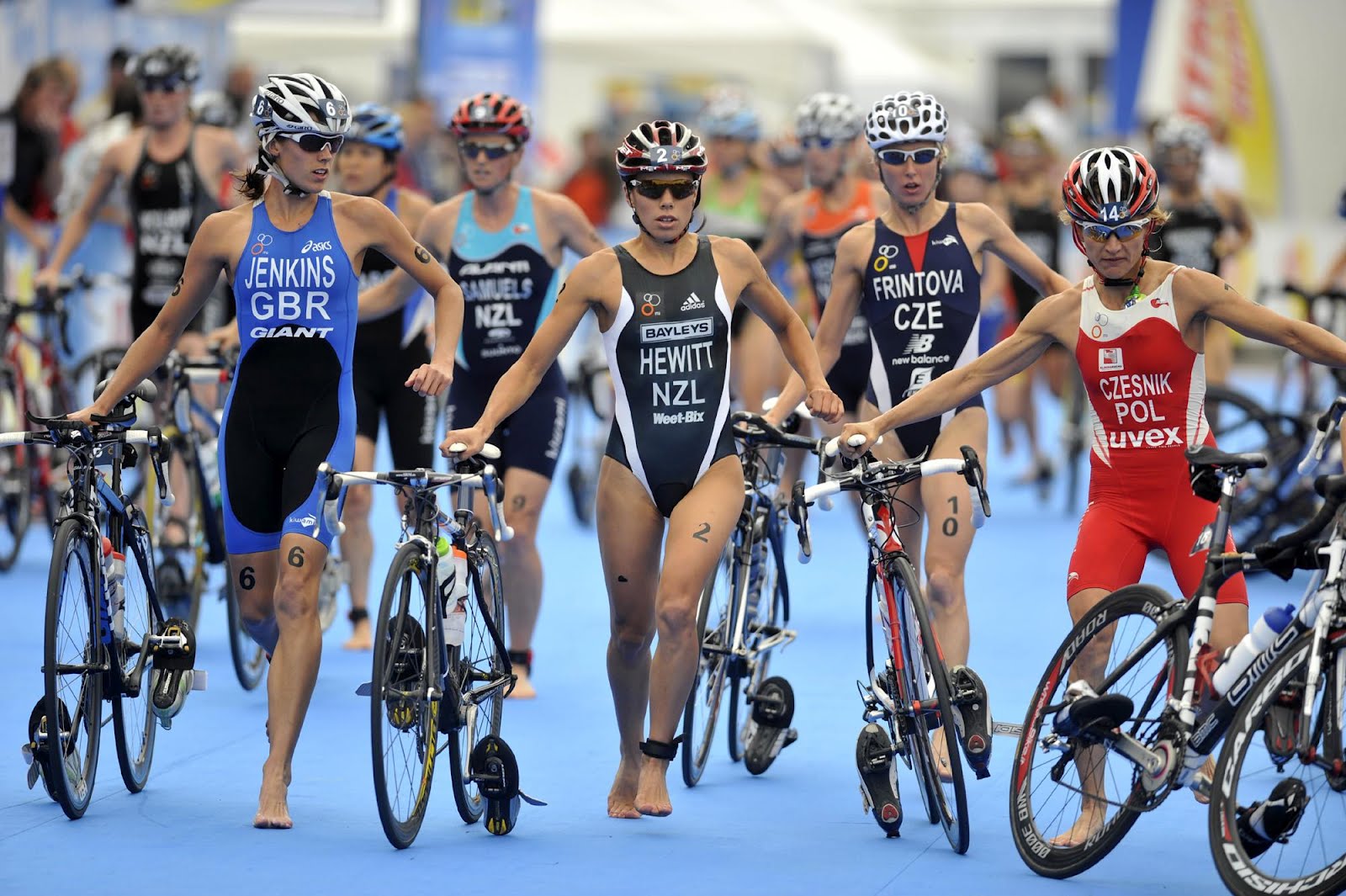

Featured
How Should I Practise For A Triathlon
Modified: August 21, 2023
Looking for tips on how to prepare for a triathlon? Our featured article provides expert advice on effective training methods to help you succeed.
Introduction
Preparing for a triathlon is an exciting and challenging endeavor that requires dedication, discipline, and careful planning. Whether you’re a seasoned athlete looking to push your limits or a beginner looking to take on a new fitness challenge, proper preparation is essential to ensure a successful performance on race day. In this article, we will explore effective strategies and tips for practicing for a triathlon.
Participating in a triathlon is not just about completing the swim, bike, and run segments; it’s about pushing your body and mind to its limits, achieving personal growth, and experiencing a sense of accomplishment. To succeed in a triathlon, it’s important to set clear goals, establish a training schedule, and follow a well-rounded training plan that includes swimming, cycling, running, strength and conditioning exercises, as well as nutrition and recovery strategies.
No two triathletes are alike, and everyone has different goals and fitness levels. Whether you strive to complete your first triathlon or aim for a personal best, setting realistic and achievable goals is crucial. Consider factors such as your current fitness level, previous experience in endurance sports, and the time you can commit to training.
Once you have established your goals, it’s time to create a training schedule that fits your lifestyle and keeps you on track. Consistency is key, so aim to spread out your training sessions throughout the week and gradually increase the duration and intensity as you progress. Having a structured plan will not only prevent burnout but also help you monitor your progress and make necessary adjustments along the way.
In the following sections, we will dive deeper into specific training tips for swimming, cycling, and running, as well as discuss the importance of strength and conditioning exercises, transition practice, nutrition and hydration, rest and recovery, and mental preparation. By incorporating these strategies into your training routine, you’ll be well-equipped to tackle the challenges of a triathlon and perform at your best.
Remember, preparing for a triathlon is not just about physical training; it’s also about mental fortitude and staying motivated. Embrace the journey and enjoy the process, as every step brings you closer to achieving your goals and becoming a stronger, more resilient athlete. So lace up your shoes, grab your goggles, and get ready to conquer the triathlon of your dreams!
Setting Your Goals
Setting clear and achievable goals is an essential first step in preparing for a triathlon. Your goals will serve as a guide to keep you motivated, focused, and accountable throughout the training process. Here are some tips for setting your triathlon goals:
- Be realistic: Assess your current fitness level and experience in endurance sports. Set goals that are challenging yet attainable based on your abilities. Consider factors such as your swimming, cycling, and running proficiency, as well as your overall fitness.
- Identify your priorities: Determine what you want to achieve with your triathlon training. Are you aiming to complete your first triathlon, improve your time in a specific distance, or qualify for a competitive event? Clarify your priorities and tailor your goals accordingly.
- Break it down: Divide your goals into short-term and long-term targets. Short-term goals can be weekly or monthly milestones, such as increasing your training volume or improving your speed in a specific discipline. Long-term goals can be achieving a certain race time or completing a more challenging distance.
- Make them measurable: Structure your goals in a way that allows you to track your progress. Instead of simply saying, “I want to get faster,” specify a time goal for a particular distance. This will provide a clear benchmark for your improvement and keep you motivated along the way.
- Consider external factors: Take into account any external factors that may impact your training, such as work commitments, family responsibilities, or other personal obligations. Set goals that are realistic within the constraints of your daily life, ensuring that they are both challenging and feasible.
Remember, your goals should be personal and tailored to your individual journey. Avoid comparing yourself to other athletes or setting unrealistic expectations based on someone else’s achievements. Stay focused on your own progress and celebrate each milestone you reach.
Setting goals is not a one-time event; it’s an ongoing process. Regularly reassess and adjust your goals as you progress in your training. As you accomplish each goal, set new ones to continue challenging yourself and advancing your triathlon skills.
By setting clear and achievable goals, you’ll have a roadmap to follow throughout your triathlon training. Your goals will provide you with direction, motivation, and a sense of purpose, helping you stay committed and focused on your journey to triathlon success.
Establishing a Training Schedule
A well-structured training schedule is the backbone of successful triathlon preparation. It helps you stay organized, maintain consistency, and gradually build your fitness and endurance. Here are some tips for establishing an effective training schedule for your triathlon:
- Assess your available time: Take a realistic look at your daily and weekly schedule to determine how much time you can dedicate to training. Consider your work hours, family commitments, and other responsibilities. Be honest with yourself about the time you can realistically allocate.
- Spread out your sessions: It’s important to evenly distribute your training sessions throughout the week. Avoid cramming all your workouts into a couple of days and then leaving the rest of the week empty. Spreading out your sessions helps prevent overtraining, reduces the risk of injuries, and allows for proper recovery.
- Mix up the disciplines: Plan your schedule to include swimming, cycling, and running sessions, as well as strength and conditioning exercises. Emphasize the disciplines you feel least comfortable with, but also make sure to include rest days for recovery. Varying your workouts not only helps improve your overall fitness but also keeps your training engaging and enjoyable.
- Gradually increase intensity: Start with lower-intensity workouts and gradually increase the duration and intensity as your fitness improves. This progressive approach helps prevent overexertion and allows your body to adapt to the demands of triathlon training. Avoid sudden spikes in training volume, as they can lead to burnout or injury.
- Listen to your body: Pay attention to your body’s signals and adjust your training schedule accordingly. If you’re feeling excessively fatigued or experiencing pain, take a step back and prioritize rest and recovery. Pushing through injuries or extreme fatigue can do more harm than good in the long run.
In addition to planning your training sessions, consider incorporating cross-training activities into your schedule. Activities such as yoga, Pilates, or swimming drills can help improve your flexibility, core strength, and technique, enhancing your overall performance in the swim, bike, and run segments.
Keep in mind that your training schedule should be flexible enough to accommodate unexpected events or changes in your routine. Life happens, and there may be times when you need to adjust your schedule or skip a session. Don’t stress over missed workouts; instead, focus on staying consistent and making the most of the time you have available.
Establishing a training schedule is not only about planning your workouts but also about creating a healthy balance between training and recovery. Remember to prioritize rest days and allow your body to recover and adapt to the physical demands of your training. Recovery is just as important as the training itself in maximizing your performance and preventing burnout.
With a well-structured training schedule, you’ll be able to make the most efficient use of your time, steadily progress in your triathlon preparation, and set yourself up for success on race day.
Swimming Training Tips
Swimming is often considered the most challenging discipline for many triathletes. To improve your swimming technique and build endurance, incorporate the following tips into your training:
- Focus on technique: Technique is crucial in swimming. Work on improving your body position, breathing, and stroke efficiency. Consider taking swimming lessons or working with a swim coach to refine your technique. Incorporate drills that specifically target areas for improvement, such as balance drills or catch-up drills.
- Swim regularly: Consistency is key to improving your swimming skills. Aim to swim at least two to three times a week, if possible. Regular practice helps build muscle memory and improves your stamina in the water.
- Vary your workouts: Incorporate a mix of distance swimming, interval training, and sprint sets into your workouts. Distance swimming builds endurance, interval training improves speed, and sprint sets help develop power. Varying your workouts keeps them engaging and helps develop different aspects of your swimming ability.
- Include open water swims: If your triathlon will take place in open water, make sure to include open water swim sessions in your training. This will help you acclimate to the conditions and build confidence in open water environments. Practice sighting techniques and swimming in a straight line without the aid of pool lane markers.
- Train in race conditions: Try to simulate race conditions during some of your swim training sessions. Practice swimming in a crowded pool or join a group swim to get accustomed to swimming in close proximity to other athletes. This will help reduce stress and anxiety on race day.
- Use swimming aids: Incorporating swimming aids, such as a kickboard, pull buoy, or swim paddles, can help you target specific areas of your swimming technique and build strength and endurance. However, use these aids in moderation and focus on maintaining good technique to avoid relying on them too heavily.
- Practice transitions: Transitioning smoothly from swimming to cycling is a key aspect of triathlon success. Allocate time in your training to practice transitioning from the swim to the bike, and consider including brick workouts that involve swimming immediately followed by cycling.
Remember, becoming a proficient swimmer takes time and practice. Be patient with yourself and celebrate even small improvements. Consistent training and focusing on technique will help you become a stronger and more efficient swimmer, ultimately contributing to a successful triathlon performance.
Cycling Training Tips
Cycling is a crucial component of triathlon training, as it not only builds lower body strength and endurance but also allows you to cover longer distances efficiently. To optimize your cycling performance, consider these training tips:
- Build endurance: Begin by focusing on building your cycling endurance. Start with shorter rides and gradually increase the duration and distance over time. Aim for longer rides at least once a week to improve your aerobic capacity and stamina.
- Incorporate intervals: Interval training is an effective way to boost your cycling speed and power. Include interval sessions in your training plan, alternating between periods of high intensity and active recovery. This helps improve your lactate threshold and overall cardiovascular fitness.
- Hill training: Hills are a great way to build strength and improve your climbing ability. Seek out hilly routes or include hill repeats in your cycling workouts. Focus on maintaining a smooth and consistent cadence as you climb, using a mix of seated and standing positions to distribute effort effectively.
- Practice cadence drills: Cadence refers to the number of pedal revolutions per minute (RPM). Aim to maintain a cadence of around 80-100 RPM to maximize efficiency. Include cadence drills in your training, focusing on spinning at different RPMs to improve your ability to maintain a consistent pace.
- Train in different terrains: Triathlon courses can vary in terrain, so it’s essential to train in different conditions. Include flat rides, rolling terrain, and challenging climbs in your training to prepare for various race scenarios.
- Mock race simulations: Simulate race conditions by incorporating mock race simulations into your training plan. This involves combining swimming, cycling, and running in a single session, replicating the intensity and transitions of a triathlon. This practice will help you familiarize yourself with the demands of race day.
- Master bike handling skills: Enhance your bike handling skills to improve your efficiency and safety on the road. Practice cornering, braking, and riding in a group if possible. These skills can make a significant difference in your overall cycling performance.
- Maintain your bike: Regularly maintain and tune up your bike to ensure optimal performance. Keep your tires properly inflated, check your brakes and gears, and clean and lubricate the chain. A well-maintained bike will provide a smoother ride and minimize the risk of mechanical issues during training and on race day.
Additionally, consider investing in a bike fit to ensure that your bike is properly adjusted to your body geometry. A professional bike fit can improve your comfort, efficiency, and power output.
Remember to stay hydrated and fuel adequately during your cycling sessions. Practice your nutrition and hydration strategies during longer rides to find out what works best for you.
By implementing these cycling training tips and consistently putting in the mileage and effort, you’ll become a stronger and more confident cyclist, setting the stage for a successful triathlon performance.
Running Training Tips
Running is the final discipline of a triathlon, and it is important to train your body to efficiently transition from the bike to the run. Here are some tips to improve your running performance:
- Gradual progression: Start with shorter runs and gradually increase the distance and intensity of your workouts. This gradual progression helps prevent injuries and allows your body to adapt to the demands of running.
- Include different types of runs: Incorporate a variety of running workouts into your training plan. Interval training, tempo runs, long runs, and recovery runs each serve a purpose in enhancing your cardiovascular fitness and running efficiency.
- Interval training: Intervals involve alternating between periods of high intensity and recovery. Incorporate interval training sessions to improve your speed, increase your aerobic capacity, and enhance your ability to maintain a strong pace.
- Hill training: Running hills helps build strength and power in your lower body. Find a hilly route or include hill repeats in your training to develop better running form and improve your overall performance on race day.
- Incorporate strength training: Strong muscles provide better support and stability to enhance your running efficiency. Include strength training exercises, such as squats, lunges, and calf raises, in your routine to develop a strong lower body.
- Improve running form: Focus on maintaining a proper running form by engaging your core, leaning slightly forward, and landing midfoot or on the balls of your feet. Avoid overstriding and maintain a cadence of around 180 steps per minute for optimal running efficiency.
- Train on different surfaces: Vary your running surfaces to challenge your muscles and adapt to different race conditions. Include road running, trail running, and track workouts in your training to improve your stability and endurance.
- Practice pacing: Learn to pace yourself during runs by using a running watch or smartphone app to track your pace. Practice running at different speeds and aim to maintain a consistent pace throughout your race distance.
- Recovery and rest: Allow for proper recovery and rest days to prevent overtraining and reduce the risk of injuries. Your body needs time to adapt and repair itself after intense training sessions. Listen to your body, and if you feel excessively fatigued or experience pain, take a break or opt for lighter workouts.
Remember to gradually increase your running mileage and intensity to prevent overuse injuries such as shin splints or stress fractures. Invest in a good pair of running shoes that provide proper support and cushioning.
Finally, practice transitioning from the bike to the run during your training. Incorporate brick workouts, where you immediately follow a bike ride with a run. This will help your body adjust to the feeling of running after cycling and improve your transition efficiency on race day.
By following these running training tips and maintaining consistency in your workouts, you will enhance your running endurance, speed, and overall performance in a triathlon.
Strength and Conditioning Exercises
Strength and conditioning exercises are essential for triathletes as they help develop overall body strength, improve endurance, and prevent injuries. Incorporating these exercises into your training routine will not only enhance your performance but also make you a more well-rounded athlete. Here are some key exercises to consider:
- Bodyweight exercises: Exercises such as push-ups, squats, lunges, planks, and burpees can be done anywhere and require no equipment. They target multiple muscle groups, improve core stability, and build overall strength. Include a mix of upper body, lower body, and core exercises in your routine.
- Resistance training: Incorporating resistance exercises using dumbbells, resistance bands, or weight machines can help build muscle strength and power. Focus on exercises that target major muscle groups, such as chest presses, squats, deadlifts, and shoulder presses.
- Plyometric exercises: Plyometric exercises involve explosive movements that improve power and speed. Jumping lunges, box jumps, and squat jumps are examples of plyometric exercises that can boost your athletic performance and running efficiency.
- Functional exercises: Functional exercises mimic movements used during triathlon events and help improve your overall performance. Include exercises like step-ups, single-leg squats, and lateral lunges to target specific muscles used during triathlon disciplines.
- Core strengthening exercises: Strong core muscles provide stability and help improve your overall body alignment. Incorporate exercises like planks, Russian twists, and bicycle crunches to strengthen your core muscles and improve your posture and endurance.
- Flexibility exercises: Incorporating stretching exercises like yoga or static stretching after your workouts can help improve flexibility, prevent muscle imbalances, and reduce the risk of injuries. Include stretches for major muscle groups, especially those used during swimming, cycling, and running.
- Cross-training: Engage in activities like yoga, Pilates, or other functional training modalities to complement your triathlon training. These activities can help improve flexibility, balance, and coordination, and reduce the risk of overuse injuries.
Remember to focus on maintaining proper form during these exercises, as quality is more important than quantity. If you’re not familiar with strength training or unsure about proper techniques, consider working with a certified strength and conditioning specialist or personal trainer to ensure that you’re performing exercises correctly and safely.
Incorporate strength and conditioning exercises into your training schedule at least two to three times a week. It’s important to allow for adequate rest and recovery between sessions to give your muscles time to repair and rebuild.
By incorporating these exercises into your training routine, you’ll develop a strong and resilient body that can withstand the physical demands of a triathlon.
Transition Practice
The transitions between each discipline in a triathlon can often make a significant impact on your overall race time. Transition practice is essential to ensure seamless and efficient transitions. Here are some tips for improving your transition skills:
- Set up a transition area: Familiarize yourself with the layout of the transition area before race day. Understand where you will place your bike, gear, and any other equipment. Practice setting up your transition area in a way that allows for quick and easy access to everything you need.
- Practice transitions at home: Set up a mock transition area at home or in a local park to practice transitioning between disciplines. Use a timer to challenge yourself to see how quickly you can complete each transition.
- Practice removing wetsuits: If you will be wearing a wetsuit for the swim portion, practice taking it off quickly. Use lubricant or baby powder to make the process smoother and faster. Practice this several times to improve your speed and efficiency.
- Master mounting and dismounting your bike: Practice mounting and dismounting your bike quickly and smoothly. Learn how to do a flying mount or a running mount if you are comfortable with it. This will save you valuable time during the transition from the swim to the bike and from the bike to the run.
- Utilize elastic laces: Use elastic laces in your running shoes to allow for quick and easy slip-on during the transition from the bike to the run. This eliminates the need to tie and untie shoelaces, saving you precious seconds.
- Practice putting on and removing footwear: Practice putting on your shoes and removing them quickly, especially when they might be wet or sweaty. This will help you streamline your transition from the swim to the bike and from the bike to the run.
- Visualize your transitions: Spend some time visualizing each transition in your mind. Imagine yourself going smoothly through each step and mentally prepare for any potential challenges or obstacles that may arise.
- Seek feedback: When practicing transitions, seek feedback from experienced triathletes or coaches. They can provide valuable insights and suggestions to help improve your efficiency and technique.
Remember to simulate race conditions as much as possible during your transition practice. Incorporate all the necessary gear and equipment, as well as the timing and rhythm of a typical race. The more you practice, the more comfortable and efficient you will become.
Transition practice should be a regular part of your training routine. Allocate specific sessions to focus on transitions, as this will help you refine your skills and build confidence. By mastering your transitions, you’ll be able to shave off valuable time and compete more effectively in a triathlon.
Nutrition and Hydration
Nutrition and hydration play a crucial role in ensuring optimal performance during a triathlon. Proper fueling and hydration strategies can enhance your endurance, improve your recovery, and help you maintain a steady pace throughout the race. Here are some tips to consider:
- Pre-race nutrition: Prior to the race, focus on consuming a balanced meal that combines carbohydrates, protein, and healthy fats. Aim to eat this meal roughly two to three hours before the start time to allow for proper digestion. Avoid trying new foods on race day to prevent potential digestive issues.
- Hydration: Proper hydration is essential for maintaining performance and preventing dehydration. Start hydrating well in advance of the race, and continue to drink water or electrolyte-rich beverages regularly throughout the event. Pay attention to your body’s thirst cues and aim to drink enough fluids to stay properly hydrated.
- During-race nutrition: During longer distance triathlons, it is important to consume a combination of carbohydrates and electrolytes to sustain energy levels. Experiment with different forms of nutrition like gels, energy bars, or sports drinks to find what works best for you during training. Plan a nutrition strategy and practice it during your long training sessions to gauge its effectiveness.
- Post-race recovery: After completing a triathlon, prioritize recovery by replenishing your body with a mix of carbohydrates and quality protein. Consuming a recovery meal or snack within the first 30 minutes after finishing the race helps kickstart the recovery process and replenish depleted glycogen stores.
- Experiment and listen to your body: Every athlete is different, and there is no one-size-fits-all approach to nutrition and hydration. Experiment with different food and hydration strategies during training to find what works best for you. Pay attention to how your body responds to different foods and adjust accordingly.
- Train with nutrition and hydration: Practice your nutrition and hydration strategies during your training sessions to fine-tune your routine. This allows you to identify any potential digestive issues or hydration challenges and make adjustments before race day.
- Avoid overeating or underhydrating: While it is important to fuel and hydrate adequately, be mindful of overeating or underhydrating, as both can lead to discomfort or performance issues. Listen to your body’s signals and find the right balance that works for you.
Remember, practicing good nutrition and hydration habits is not just important on race day, but also throughout your training. Fueling your body properly and staying hydrated will enhance your overall performance, speed up recovery, and reduce the risk of injury and fatigue.
Consulting with a sports nutritionist or registered dietitian who specializes in endurance sports can provide personalized guidance tailored to your specific needs and goals. They can help you develop a nutrition and hydration plan that optimizes your performance in a triathlon.
Rest and Recovery
Rest and recovery are often overlooked aspects of triathlon training, but they are crucial for maximizing performance and preventing injuries. Adequate rest and recovery ensure that your body has time to repair and rebuild, allowing for long-term progress and optimal race performance. Here are some important considerations for rest and recovery:
- Rest days: Schedule regular rest days into your training plan. These are days when you engage in low-impact activities or take complete rest. Rest days allow your body to recover, reduce fatigue, and prevent overtraining. Listen to your body and don’t be afraid to take additional rest days if needed.
- Sleep: Quality sleep is essential for recovery and overall well-being. Aim for seven to nine hours of uninterrupted sleep each night. Create a sleep routine and practice good sleep hygiene by keeping a consistent sleep schedule, limiting screen time before bed, and creating a comfortable and calming sleep environment.
- Active recovery: Incorporate active recovery activities like walking, swimming, or light cycling into your training plan. These low-intensity exercises stimulate blood flow, flush out metabolic waste, and aid in muscle recovery without adding stress to your body.
- Massage and foam rolling: Utilize self-massage techniques and foam rolling to release muscle tension and improve blood circulation. These techniques help prevent muscle imbalances, alleviate soreness, and enhance recovery.
- Cross-training: Engage in activities other than the triathlon disciplines to give your body a break from repetitive strain. Cross-training activities like yoga, Pilates, or strength training promote balance, flexibility, and overall fitness, while also providing a mental break from triathlon-specific training.
- Listen to your body: Pay attention to any signs of fatigue, excessive soreness, or pain. Pushing through excessive fatigue or training with pain can lead to overuse injuries. Give your body the time it needs to recover, and seek professional help if you experience persistent pain or discomfort.
- Manage stress: High levels of stress can hinder recovery and affect performance. Incorporate stress-management techniques into your routine, such as deep breathing exercises, meditation, or mindfulness practices. Find activities that help you relax and unwind, improving your overall well-being.
- Nutrition and hydration: Proper nutrition and hydration are essential for recovery. Refuel your body with a mix of carbohydrates and protein post-workout to replenish glycogen stores and support muscle repair. Stay hydrated throughout the day to support optimal cellular function and aid in the removal of metabolic waste products.
Remember, rest and recovery are just as important as the training itself. Making time for adequate rest, quality sleep, and recovery practices will help you avoid burnout, reduce the risk of overuse injuries, and perform at your best on race day. Listen to your body, prioritize self-care, and give yourself the time and space to recover and rejuvenate.
Mental Preparation
Mental preparation is a crucial aspect of triathlon training that is often overlooked but can greatly impact your performance on race day. Mastering mental techniques and strategies will not only help you overcome challenges and push through fatigue but also enhance your overall enjoyment of the triathlon experience. Here are some tips for mental preparation:
- Visualize success: Visualize yourself successfully completing each segment of the race, from the start to the finish line. Imagine yourself overcoming obstacles, maintaining a strong pace, and feeling confident and in control. Visualization helps build confidence and familiarizes your mind with executing the race effectively.
- Set positive affirmations: Develop positive affirmations or mantras to repeat to yourself during challenging moments. Phrases such as “I am strong and capable” or “I can do this” can help reframe negative thoughts and boost your confidence and motivation.
- Practice mindfulness: Incorporate mindfulness exercises into your training routine to cultivate present-moment awareness and focus. Techniques like deep breathing, meditation, or body scans can help calm the mind, reduce anxiety, and improve mental clarity.
- Adopt a growth mindset: Embrace a growth mindset, which recognizes that challenges are opportunities for growth and improvement. Instead of viewing setbacks as failures, see them as valuable learning experiences that will ultimately make you a stronger and more resilient athlete.
- Break down the race: Rather than overwhelming yourself with the entire race distance, break it down into smaller, manageable chunks. Focus on one leg of the race at a time, setting specific goals for each segment. This approach helps maintain focus and prevents mental fatigue.
- Stay in the present moment: Practice staying present during training and on race day. Instead of worrying about future challenges or dwelling on past mistakes, stay focused on the here and now. Pay attention to your breathing, form, and surroundings to maintain mental clarity and perform at your best.
- Develop a race-day routine: Establishing a pre-race routine can help you create a sense of familiarity and calmness on race day. This routine might include warm-up exercises, visualization techniques, or listening to calming music. Stick to this routine to help you enter a focused and confident state of mind before the race begins.
- Refocus and reframe negative thoughts: When negative thoughts or doubts arise during a race, consciously refocus your attention on positive aspects of the race or on your performance goals. Reframing negative thoughts into positive ones can help you maintain mental strength and motivation.
Additionally, remember to celebrate your progress and achievements throughout your training journey. Embrace the process, have fun, and enjoy the experience. Triathlon training is not solely about the end result but also about personal growth, resilience, and discovering your own inner strengths.
By practicing these mental preparation techniques, you’ll be better equipped to handle the demands of a triathlon, maintain a positive mindset, and achieve your race-day goals with confidence and determination.
Conclusion
Preparing for a triathlon requires a multifaceted approach that encompasses physical training, mental preparation, and strategic planning. By setting clear goals, establishing a well-structured training schedule, incorporating swimming, cycling, and running workouts, and focusing on strength and conditioning exercises, you can build a solid foundation for success. Transition practice, nutrition and hydration, rest and recovery, and mental preparation are equally important elements to consider throughout your triathlon journey.
Remember that each triathlete’s journey is unique, and it’s important to listen to your body, adapt your training plan accordingly, and seek guidance from professionals if needed. Your commitment, discipline, and perseverance will be the driving forces in your training. Celebrate your progress and achievements along the way, embracing the joy and personal growth that comes with triathlon preparation.
As you embark on this remarkable journey, keep in mind that the ultimate goal is not only to conquer the swim, bike, and run aspects, but also to challenge yourself, unlock your full potential, and create lifelong memories. Embrace the ups and downs, the triumphs and setbacks, and the incredible sense of accomplishment that comes with crossing the finish line. Triathlon training is a remarkable adventure that will test your physical limits, strengthen your mental fortitude, and transform you into a resilient and well-rounded athlete.
So, lace up your running shoes, hop on your bike, and dive into the water with confidence, knowing that you have the knowledge and tools to excel in your triathlon journey. With dedication, determination, and a passion for pushing boundaries, you’ll not only complete a triathlon but also discover the incredible strength and potential that lies within you. Good luck on your triathlon adventure!

